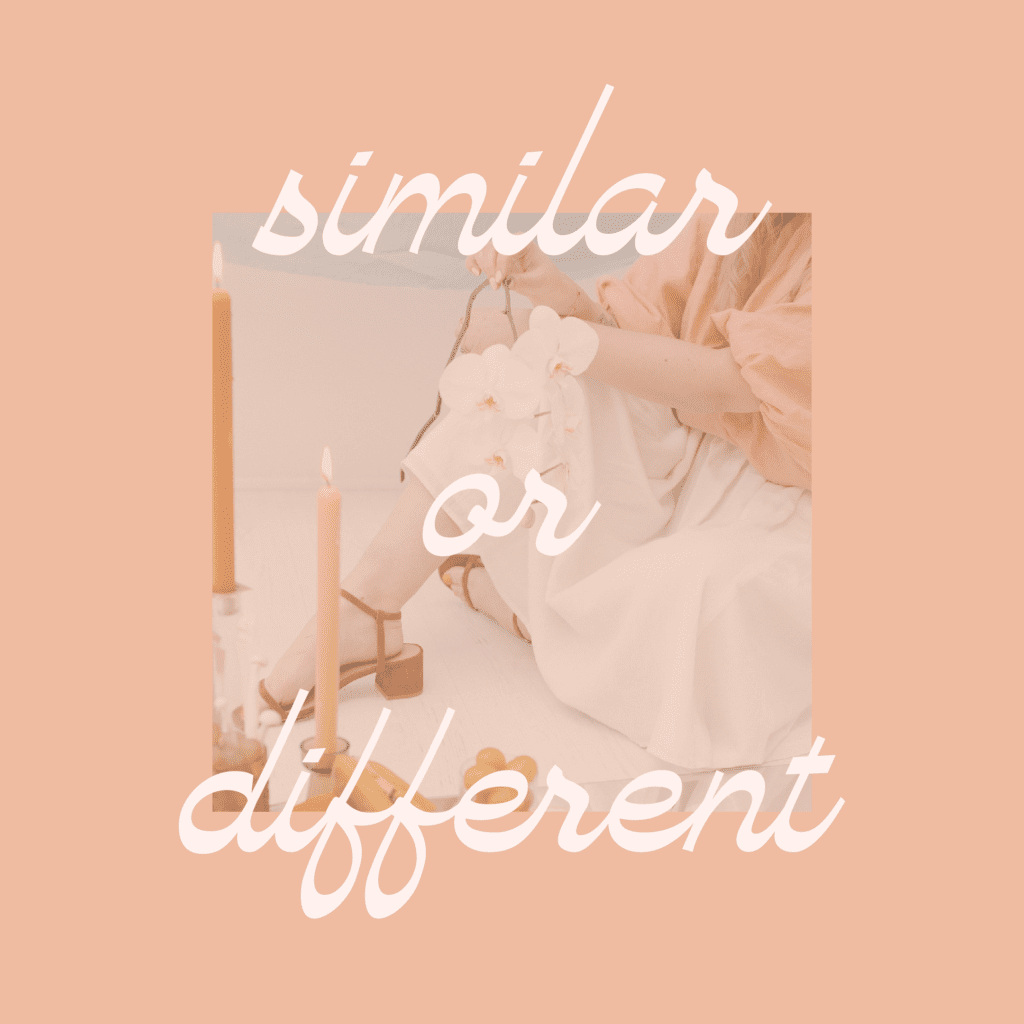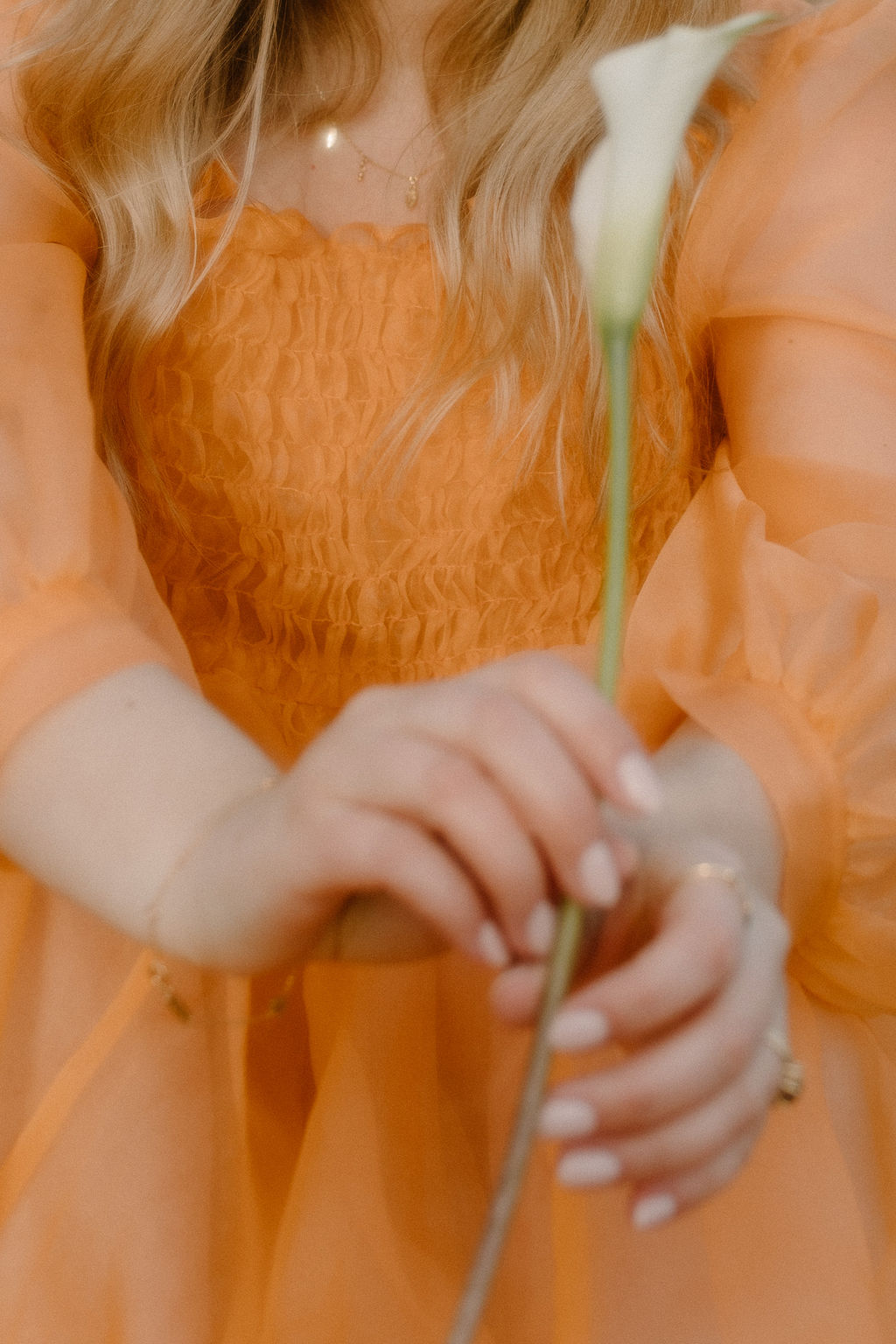Move over, world — you’ve got a BIG idea. Maybe it’s a new product, a new service, or the same service at a different price point for a new, lucky audience. Whatever it is, I bet your brain is filled with entrepreneurial magic dust because you. can’t. wait.
As your brain goes crazy with ideas (even when your head’s on your pillow), you may be thinking about whether to launch a second brand. Should your new offering have its own website, a unique personality, and a voice of its own? Or should it live under your current brand?
Answer: It depends. Probably not what you wanted to hear, but don’t worry, I’m helping you decide with…
- 3 questions to ask yourself
- 3 sister brands that are totally killing it + how
- Big words of advice from someone who’s been there, done that! (Me. Lol.)
Go whip up some coffee, grab your notebook (creativity needs pen + paper, don’t you think?), and let’s get to brainstorming.
Question 1: Who’s your audience?
Is this new offering meant to serve the same audience as the first? Or are they two different audiences entirely? If they are two different audiences, separating them out will allow both brands to grow to their full potential. This means that positioning, graphic design, brand experience, and messaging can all be hyper-specific to the desired audience. Which equals wayyy more success attracting them.
If both brands would speak to the same audience, just at two different points on their journey, I still think separating the two can be a good idea. For example, if your audience is creative entrepreneurs, two points on the same person’s journey could be a newbie vs. established biz. The following Q’s will help you narrow it down even further…


Question 2: What’s your price point?
The next thing to think about is price point. Pricing automatically positions a brand. If you have two different offerings at two different price points under the SAME brand, your overall market position may be confusing to your audience. Imagine if Chanel sold a $100 perfume and a $12 perfume. Are they a luxury brand, or are they trying to compete with the drug store?
Confusion leads to mistrust, which decreases your ability to connect with your audience and sell your offering. Which brings me to my next point…
Question 3: How will each brand scale?
You also need to think about how each brand will scale. By scale, I mean what do you see as the destination for each brand? Do you want your brand to become a Target or a Dior? Target is accessible. Dior is exclusive. Price point aside, each of these brands would be marketed very differently.
So, are your two brands going in different directions? If so, give them room to grow on their own. If you imagine both scaling to the same destination, then keeping them together may be more strategic.


Question 4: How similar or different should the two brands be?
Okay, by now, you probably have your answer. If you’re keeping them under your original brand, great! You can stop reading right here because you have your answer. If you’re pumped about creating two sister brands, you might be thinking…
What’s next? Should those two brands be drastically different so no one confuses them? Should they be similar aesthetically so they feel unified?
Again, not the answer you want to hear (don’t shoot the messenger!), but it can honestly go either way. I’ve seen both approaches done really well. And remember, your brand isn’t just your visual aesthetics. When we work on custom branding for clients, it includes:
- Objectives + Target Audience
- Market Positioning
- Voice + Messaging
- Brand Identity Elements (logo, website, photography direction, graphics, etc.)
- Brand Experience
Each of these needs to be considered in relation to the brand’s offering. However, at least one or more of these are likely to be similar for both of your sister brands, simply because the underlying piece is you.
Not sure what I mean? Here are 3 great examples…
Sister Brands: Styleberry Creative + Sourced
Meet the Brands: Styleberry Creative is a full-service interior design firm that offers white-glove, done-for-you design services. We created their brand around the ideas of simplicity and ease to convey a “we’ll take care of you” feel. It feels fresh, inviting, and empathetic.
Meanwhile, Sourced is a product-based business that sells professionally curated design kits for action-taking women who will lead their own bathroom renovations. Because this product requires more action on the consumer side, we shaped the brand to evoke a sense of confidence, empowerment, and a sexier vibe.
However, it’s important to note that the client for each of these brands is not necessarily different! The same client could hire Styleberry for a custom kitchen but take on a smaller bathroom with a Sourced kit.
Why the Split: Similar audience, different service, different price point
How They’re Unified: In this case, the owner Shawna’s aesthetic as an interior designer is one of the main unifying pieces. Her mission is also a common theme: helping people take control of their homes and love the outcome.
See them in action: Styleberry Creative + Sourced
Sister Brands: Sincerely Jules + Color Dept.
Meet the Brands: Although both brands fall into the lifestyle, fashion, and beauty industry, they each feature a different product. With Sincerely Jules, Julie is the product. It’s a well-established personal brand that Julie uses to inspire her audience. Her brand strikes a high-end, classy, editorial feel with heartfelt messages and inspiration.
We had the opportunity to help brand her sister business, Color Dept., which is a direct-to-consumer product (vegan, cruelty-free nail polish in bold hues) that isn’t about Julie at all. It’s about the audience. We designed the Color Dept. brand and message to inspire their audience to embrace color, imagination, and adventure. It has a slightly edgier, younger feel.
Why the Split: Different product, different mission
How They’re Unified: Both brands are the creative brain children of Julie , and her creative direction stays fairly consistent. Her own values of empowerment, dream-chasing, and inspirational personal stories are the string that ties these sister brands together.
See Them in Action: Sincerely Jules + Color Dept.
Sister Brands: ByAriel + The Blog Stop
Meet the Brands: ByAriel has a higher-end vibe with a very niche, specific aesthetic and a message that speaks to the more established business owner. This attracts clients with larger budgets and the desire for boutique, done-for-you services. They would rather trade money to save time. (More about my journey branding ByAriel here.)
The Blog Stop’s audience is at a different stage in their business journey. They are just getting started, still figuring out what works, and working to get to the next level. They usually have a smaller budget and would rather save money by doing things themselves. We’ve branded The Blog Stop to provide customizable design that inspires and empowers their individual creativity.
Why the Split: Similar audience, different point in the journey, different price point
How They’re Unified: Both offer wildly creative design work and uphold our message that being different is what will take you the farthest.
See Them in Action: ByAriel + The Blog Stop

What most people don’t know about launching a 2nd brand
It can be really helpful to bring someone else in!
Launching a second brand while running the first is no joke. You will most likely need far more help than when you built the first brand… which actually makes the second one much easier because you HAVE the help.
Remember, too, the best collabs result from trust, shared values, and a great relationship. As you look for your brand designer, I suggest finding someone who speaks to your own sense of creativity and values. Then, scope them out and chat with them to see if there’s a spark!
In case you want to chat with us, I’ll put this right here. 😉
xx,
Ariel
